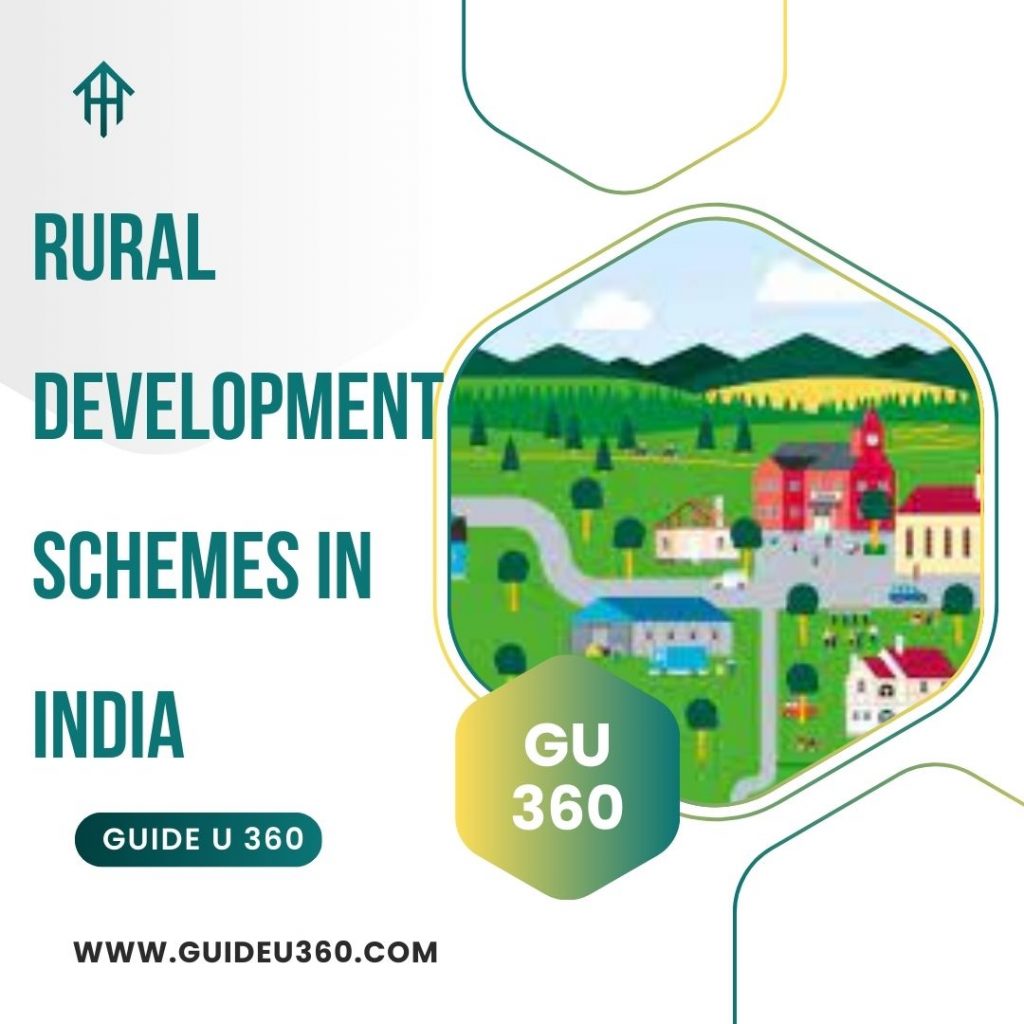Rural development is a crucial aspect of India’s growth strategy, aiming to improve the quality of life in rural areas and ensure balanced regional development. The Indian government has implemented various schemes and programs to address the needs of rural communities, focusing on infrastructure, education, health, and economic opportunities. Here’s a look at some of the major rural development schemes in India and their impact.

1. Mahatma Gandhi National Rural Employment Guarantee Act (MGNREGA)
Objective: To provide at least 100 days of guaranteed wage employment in a financial year to every rural household.
Key Features:
- Provides employment to enhance livelihood security in rural areas.
- Focuses on creating durable assets like roads, ponds, and irrigation facilities.
- Aims to improve the standard of living and reduce poverty.
Impact:
- Significant increase in rural employment opportunities.
- Creation of infrastructure that benefits rural communities.
2. Pradhan Mantri Awaas Yojana – Gramin (PMAY-G)
Objective: To provide affordable housing to the rural poor.
Key Features:
- Provides financial assistance for the construction of new homes or the renovation of existing ones.
- Focuses on providing houses with basic amenities such as water, sanitation, and electricity.
- Aims to achieve “Housing for All” by 2022.
Impact:
- Improved housing conditions for millions of rural families.
- Contribution to overall rural infrastructure development.
3. Swachh Bharat Mission – Gramin (SBM-G)
Objective: To achieve universal sanitation coverage and eliminate open defecation in rural areas.
Key Features:
- Focuses on the construction of household and community toilets.
- Promotes hygiene education and behavior change.
- Includes a strong emphasis on community participation.
Impact:
- Significant reduction in open defecation and improved sanitation.
- Enhanced health and hygiene standards in rural areas.
Cyclones around the World
4. National Rural Health Mission (NRHM)
Objective: To provide accessible, affordable, and quality healthcare to the rural population.
Key Features:
- Focuses on improving maternal and child health, reducing the burden of communicable diseases, and strengthening the healthcare infrastructure.
- Includes initiatives like the Janani Suraksha Yojana (JSY) for maternal care and the National Vector Borne Disease Control Program (NVDCP).
Impact:
- Improved healthcare access and quality in rural areas.
- Reduction in maternal and infant mortality rates.
5. Deendayal Antyodaya Yojana – National Rural Employment Guarantee Scheme (DAY-NRLM)
Objective: To promote self-employment and organization of rural poor into self-help groups (SHGs).
Key Features:
- Focuses on financial inclusion, livelihood enhancement, and community empowerment.
- Provides support for skill development, credit access, and entrepreneurship.
Impact:
- Empowered rural women and improved their economic status.
- Increased access to financial services and business opportunities.
6. Rural Infrastructure Development Fund (RIDF)
Objective: To provide financial assistance for the development of infrastructure in rural areas.
Key Features:
- Provides funding for projects related to rural roads, bridges, irrigation, and other infrastructure.
- Managed by the National Bank for Agriculture and Rural Development (NABARD).
Impact:
- Enhanced rural infrastructure leading to better connectivity and economic opportunities.
- Support for agricultural and rural development projects.
7. Pradhan Mantri Gram Sadak Yojana (PMGSY)
Objective: To provide all-weather road connectivity to unconnected villages.
Key Features:
- Focuses on the construction and improvement of rural roads.
- Aims to connect remote and backward areas to the mainstream economy.
Impact:
- Improved accessibility and connectivity for rural communities.
- Facilitated economic activities and market access for farmers.
8. Skill Development Schemes
Objective: To enhance the employability of rural youth through skill development and vocational training.
Key Features:
- Includes programs like the Deen Dayal Upadhyaya Grameen Kaushalya Yojana (DDU-GKY) and the National Skill Development Mission (NSDM).
- Provides training in various trades and skills to improve job prospects.
Impact:
- Increased employment opportunities for rural youth.
- Enhanced skills leading to better job prospects and economic growth.

9. Integrated Rural Development Programme (IRDP)
Objective: To provide financial assistance to below-poverty-line families for self-employment and income-generating activities.
Key Features:
- Offers subsidies and loans for various income-generating activities such as agriculture, livestock, and small businesses.
- Focuses on improving the economic condition of the rural poor.
Impact:
- Increased income levels and economic stability for rural families.
- Support for various livelihood activities and self-employment.
10. Atal Pension Yojana (APY)
Objective: To provide a guaranteed pension to workers in the unorganized sector.
Key Features:
- Focuses on providing a monthly pension after the age of 60.
- Aims to enhance social security for rural and unorganized sector workers.
Impact:
- Improved financial security and stability for retirees in rural areas.
- Encouraged savings and investment for old-age benefits.





